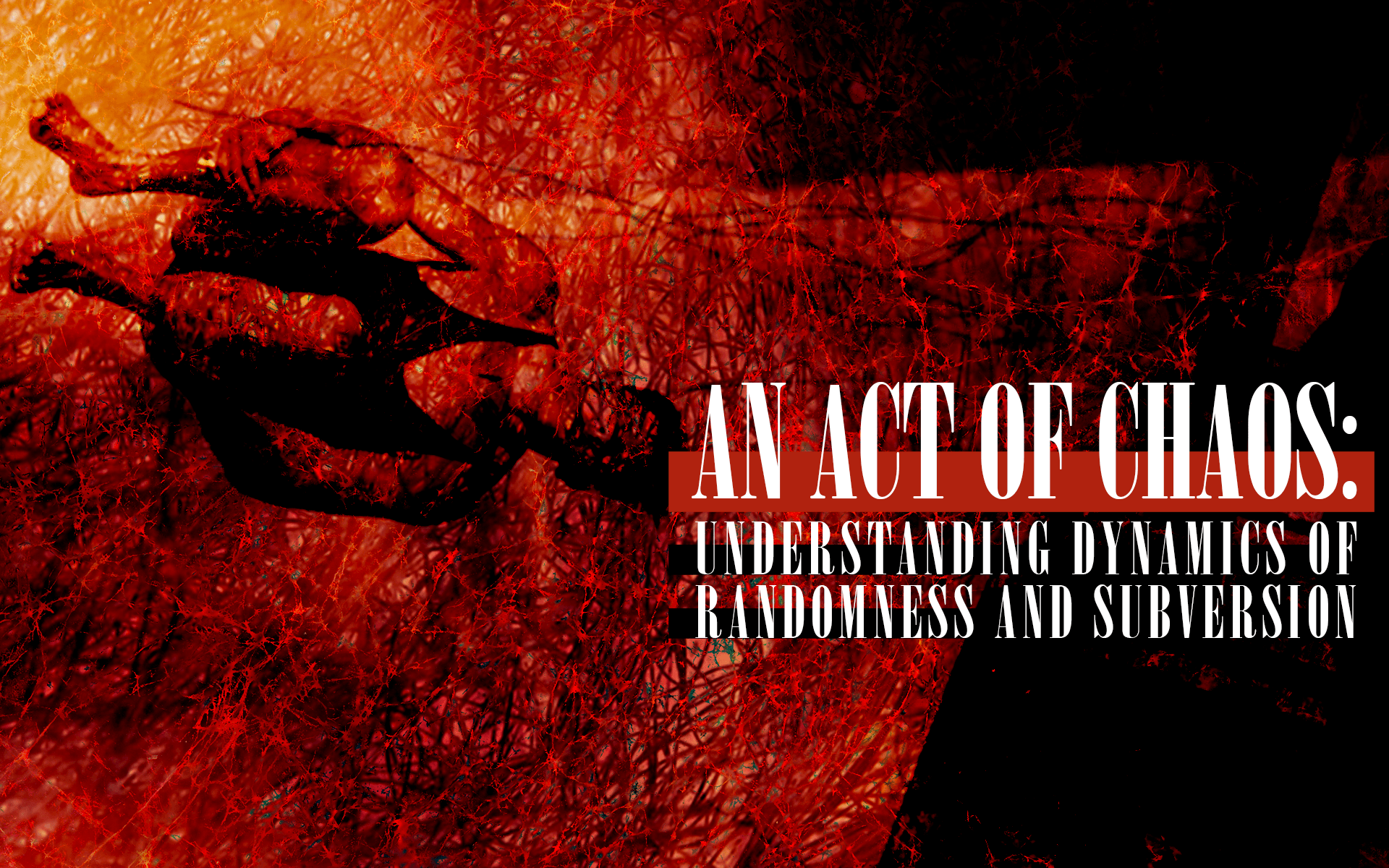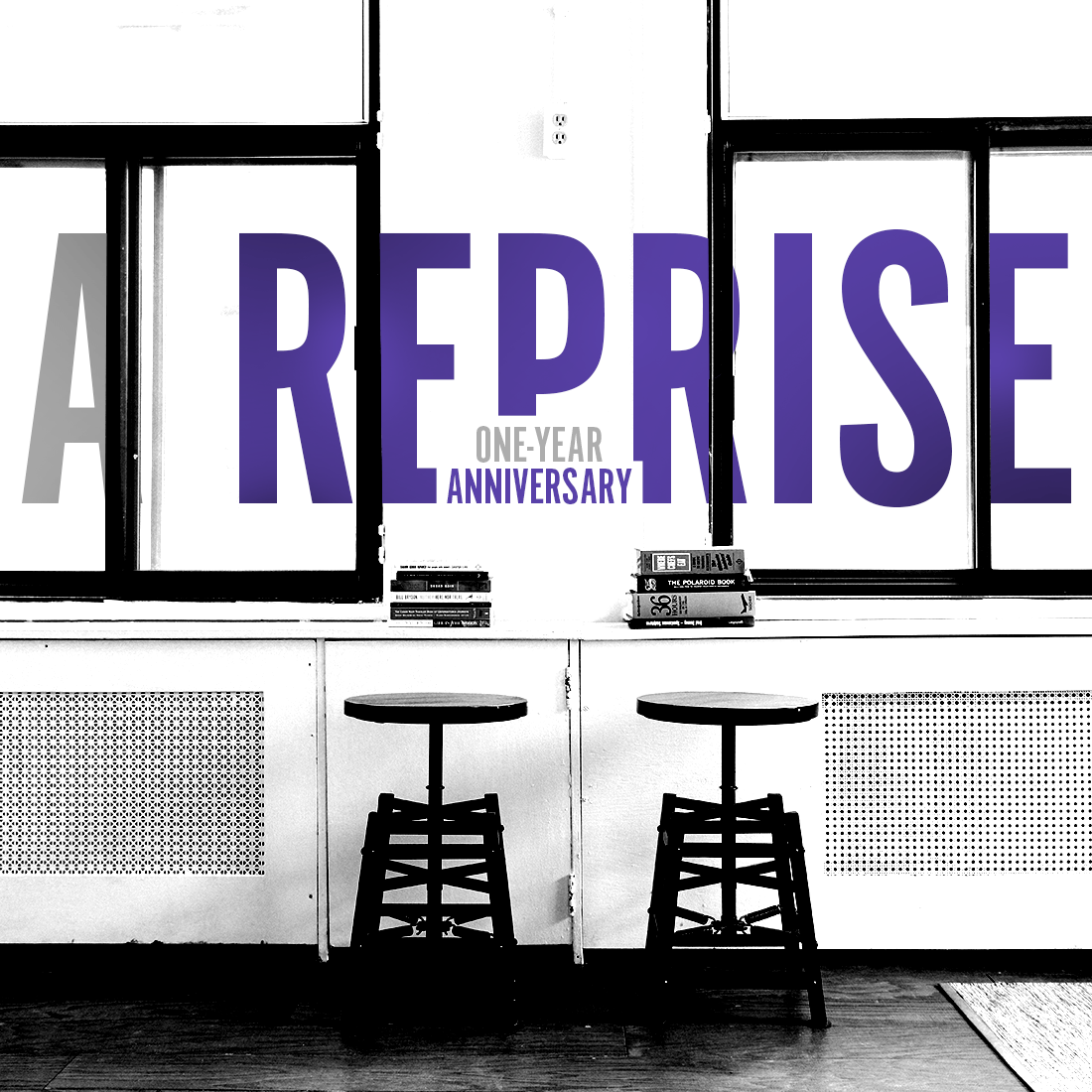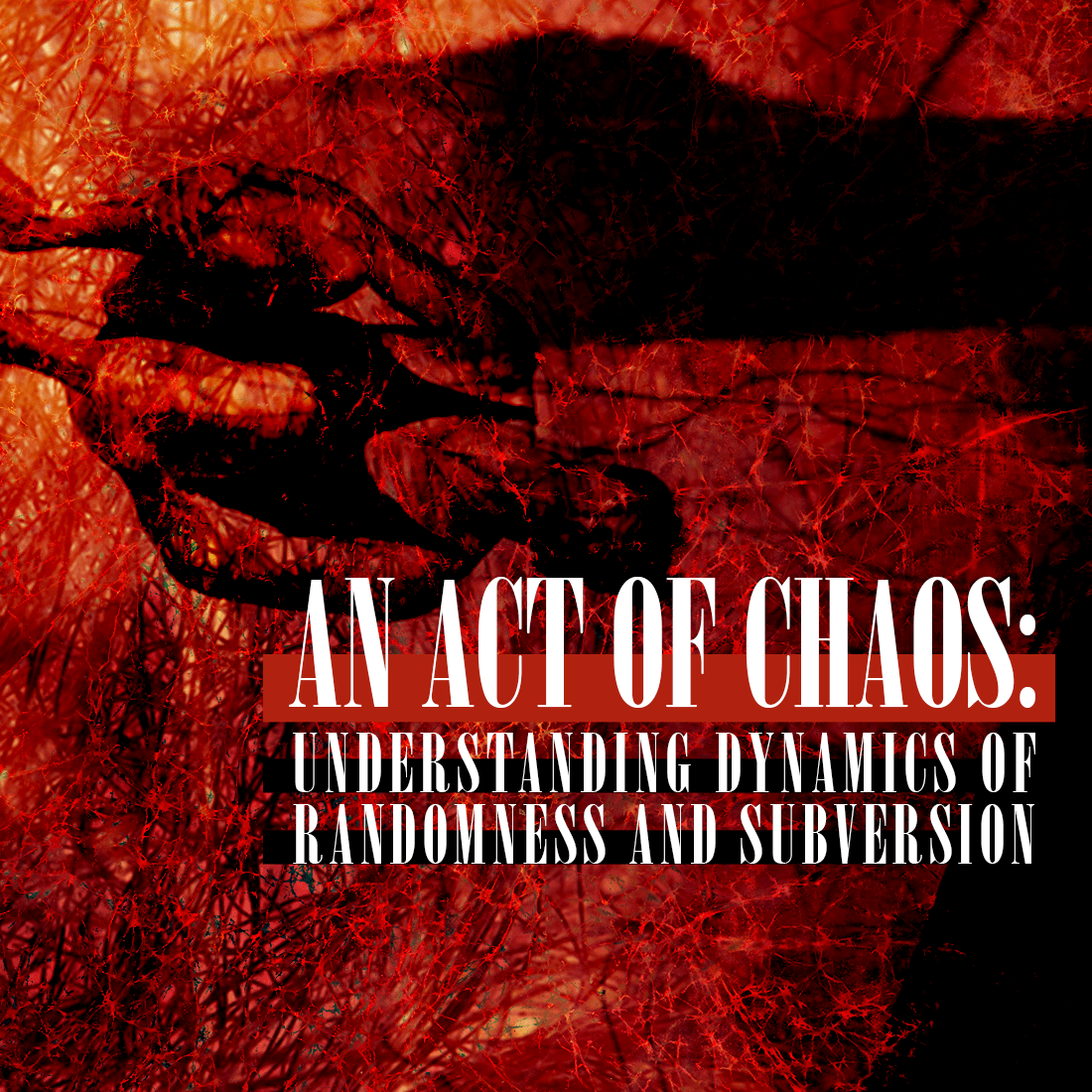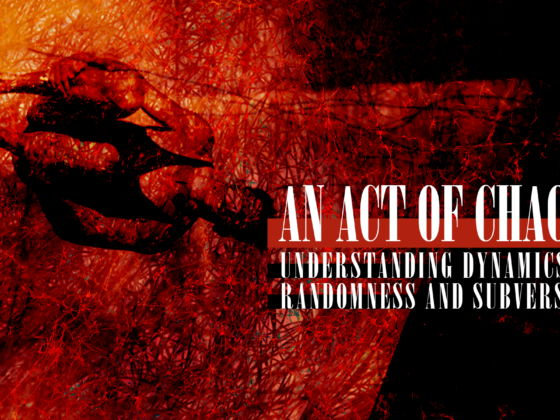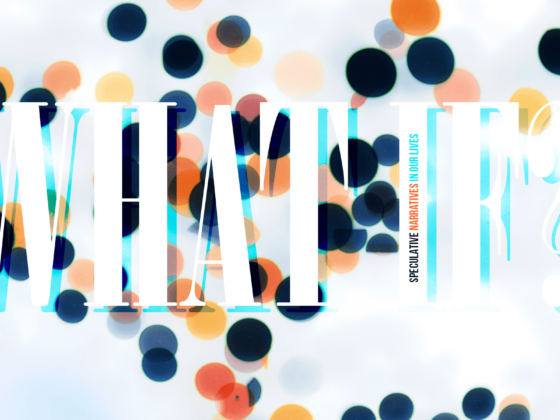URI PACHTER
Go Cubs, go!
Moments before midnight on November 2, 2016, Chicagoans let out a simultaneous sigh of relief and shriek of joy as the Cubs broke a 108-year drought and won the World Series. People poured out onto the streets, high-fived people they’d usually ignore, and chanted together with people they’d usually shush as they followed the crowd towards Wrigley Field.
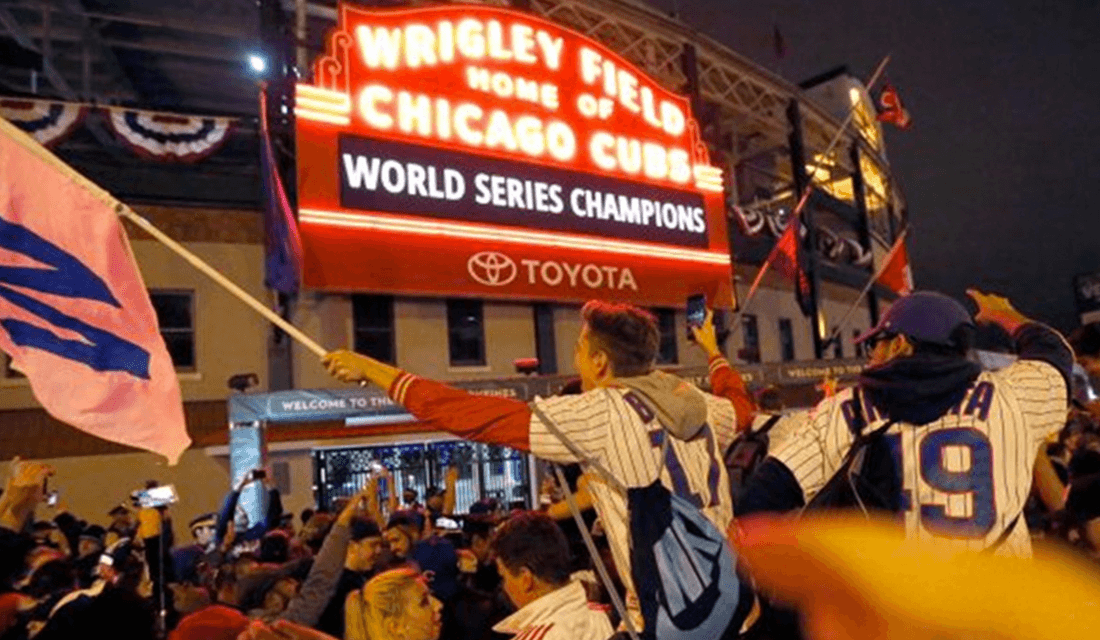
Source: © Gossip On This
Less than 36 hours later, over five million people (possibly the 7th largest gathering in human history!) made their way to Grant Park for a parade and rally in celebration of the Cubs achievement. On the one hand, the celebration was highly structured and controlled: there were thousands of police officers, security, and event staff, and barricades were set up to direct attendees to certain areas and prohibit them from entering others. Though it was less than two days after the Cubs had won, it was clear that the city had spent weeks organizing the event.
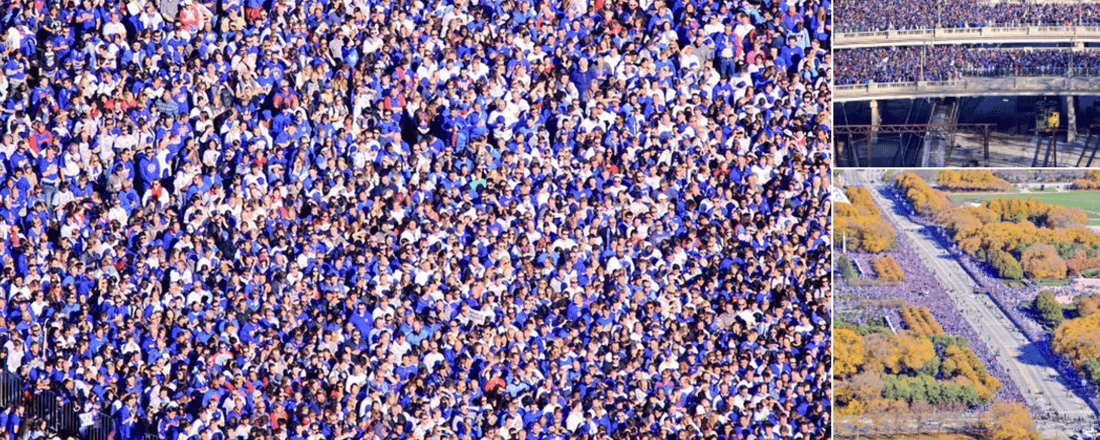
Source: Brad Edwards/Twitter
Yet, there was also a subversive, chaotic, and disorderly component to the celebration. People were drinking and smoking cigars and marijuana — many likely underage. Young people took over any infrastructure they could: the only limiting factor was the imposing buildings of the iconic Chicago skyline. Much to the pleasure of the crowd, a man performed what looked like an Olympic gymnastics routine on a traffic signal in the middle of Michigan Avenue and a series of fans did some extreme trust falls.
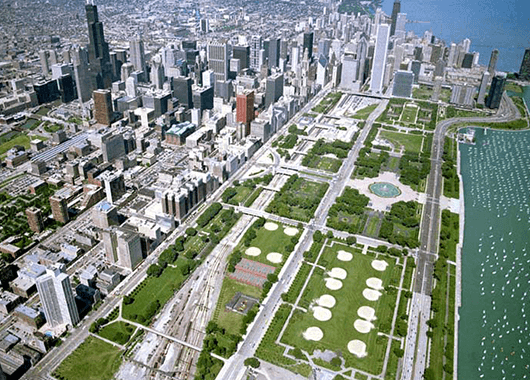
Aerial view of Grant Park | Source: © Museum of the City
I was most fascinated (and admittedly excited) about the temporary addition of space to the public realm and simultaneous removal of space from the public realm. As I exited the ‘L’ and made my way to Grant Park, every street I walked on (yes the street, not the sidewalk!) was used by people, not vehicles. Such a large portion of any city is its streets, which are designed for the use of cars, not people. For one day, these streets were for foot traffic. Yet, I was not allowed to enter portions of Grant Park, a public space that’s supposed to be free to anyone and everyone to enter, at least between 6 a.m. and 11 p.m. One of the few spaces that do not require an entry fee or purchase to enter was no longer available to the general public. What an odd juxtaposition!
The design, programming, and staffing of parks, plazas, and other public spaces affect how we behave in and around those spaces, but the reverse is also true. Our behavior impacts how other people use these spaces — and even how they are designed, programmed, and staffed. Politicians, developers, architects, and urban designers aren’t the only ones who should influence the design of our cities’ most egalitarian spaces.
Part of the reason city residents feel the need to reclaim their public urban spaces is due to the ways in which these spaces themselves were designed: likely without deep engagement with the public or without consideration for how people will actually use these spaces.
Public Spaces as Conduits for Subversion and Chaos
So, how are people actually using parks and public plazas today? People play soccer, have a picnic, or read a book. They meet up with a friend, do tai-chi, or let their children run off some steam. These are common, recommended ways to interact with modern parks and public spaces. Yet, people are creative and use these public spaces for many other purposes. At night, parks may offer illicit drugs, a willing sexual partner, or space to sleep if you have no other shelter.
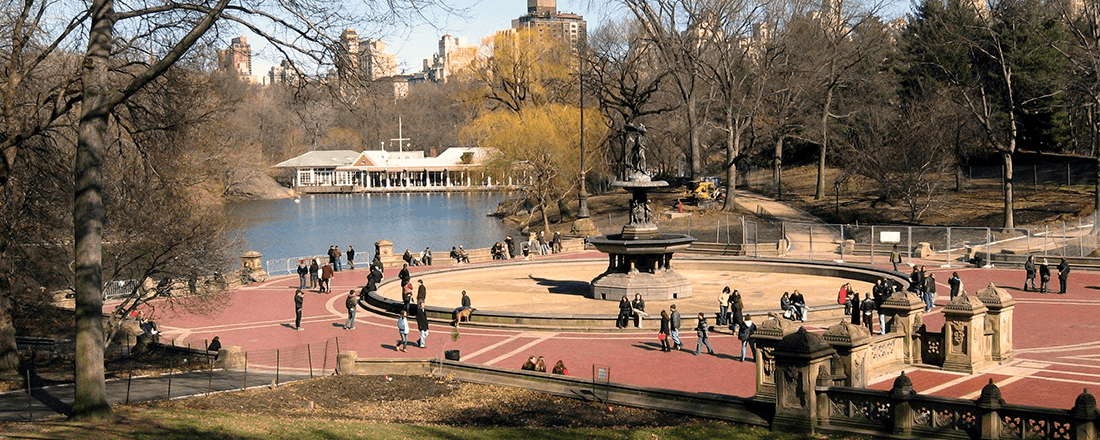
The Bethesda Fountain, The Lake, and Loeb Boathouse in Central Park, New York City | Source: Jim Henderson/Wikimedia Commons
Major political rallies and protests often take place in these spaces; what other venue can support such a large number of people? Even so, would the images of the March on Washington or Tahrir Square during the Arab Spring have been as compelling inside a football stadium, or an indoor mall? Part of the power of protest is its public visibility, and its location places it in the context of other important, historic political events, not to mention a confrontation with the ruling powers that built it. Even in an age of live-tweeting and live-streaming, the power of place is present.
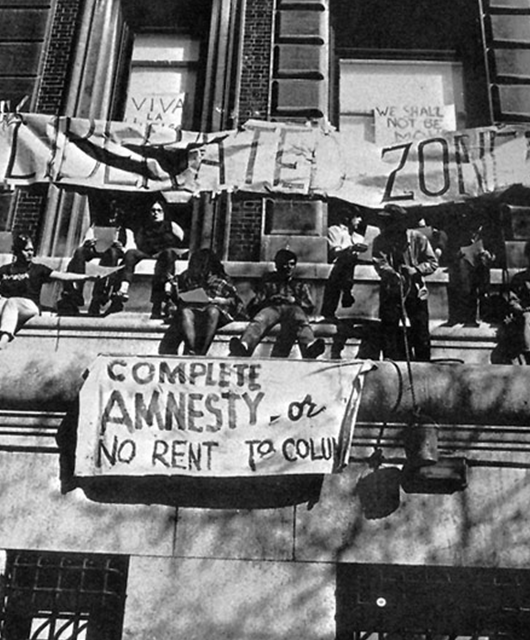
1968 protests at Columbia University | Source: Columbia 1968
Parks themselves can be the focal point of racial tension and gentrification. In the mid-1960s, massive protests, student strikes, and occupations of university buildings broke out because Columbia University planned to build a new gymnasium in the city-owned, public Morningside Park. Not only would it have privatized and built upon public open space, two separate entrances and facilities were proposed: a small facility on the lower level for the predominantly black Harlem community and a larger facility for the predominantly white Columbia University community.
Think the protests at Columbia were products of their time? Think again. In the fall of 2014, hundreds of protesters showed up at San Francisco City Hall to demand that the city’s parks be freely open to the public. A week earlier, employees of Dropbox asked local teenagers to end their pick-up soccer game because they had paid to reserve the space — a space that local teenagers had been using for years. This incident occurred in the Mission District, the epicenter of the current San Francisco gentrification battle. Tech employees were displacing locals; mostly white men were displacing Latino teenagers; people with money were displacing those without.
Part of the power of protest is its public visibility, and its location places it in the context of other important, historic political events, not to mention a confrontation with the ruling powers that built it.
Additionally, people gather in public places not just to protest, but also to have a good time and to make other people laugh. Improv Everywhere is famous for organizing flashmobs and encouraging whimsical interactions with strangers in public spaces in New York City. Performers come together to form a temporary community with a shared experience and lucky bystanders get to see a free show. While their activities are never against the law, they regularly push the boundaries of what is considered ‘appropriate’ or expected public behavior. In a similar manner, groups come together in public spaces to hoop, slackline, and fire dance; creating spectacles, pushing boundaries, building communities, and flirting with the law.
Input, Design, Rinse, Repeat
Sometimes people come together to alter the public spaces themselves. These alterations are statements about the lack of public space, the misallocation of public space, or a call for people to take advantage of the public space that does exist.
![Walk [Your City] (Source: Walk [Your City]/Facebook)](http://sixbyeightpress.com/wp-content/uploads/2017/04/walkyourcity-530x640.png)
A Walk [Your City] sign in Durham, NC | Source: Walk [Your City]/Facebook
In 2005, urban designers in San Francisco transformed a single on-street parking spot into a space usable by people. What became known as the first Park(ing) Day lasted only two hours — the length of time that parking was allowed — but its impact is still being felt. It started as a hack of public space; they didn’t ask for permission and assumed they would have to beg for forgiveness. But San Francisco wanted to adopt it as an official city program, and now it’s an annual international phenomenon. Walk [Your City] is a similar phenomenon — locals post signs letting people know how close public amenities are by foot. These simple signs often start as guerrilla urbanism but, like Park(ing) Day, cities have realized their benefit.
Part of the reason city residents feel the need to reclaim their public urban spaces is due to the ways in which these spaces themselves were designed: likely without deep engagement with the public or without consideration for how people will actually use these spaces. Until the late 1960s, nobody had researched how people were using public urban spaces in the United States.
The next time you take a walk, ride your bike, ride the bus or train, or are stopped at a traffic light, notice the parks, plazas, and public spaces near you. How are they designed? Do they encourage you to linger?
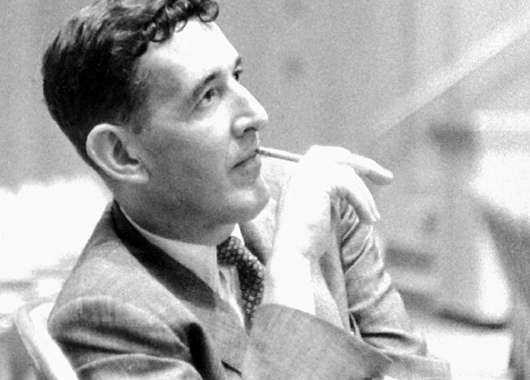
William Whyte | Source: Urban Planning + Design at UMKC
Enter William Whyte. A professor at Hunter College in New York, he spent 16 years watching people interact with public spaces and diligently taking note of all of their movements. His video, The Social Life of Small Urban Spaces, is a fascinating and somewhat quirky look at how people use public spaces in New York City. Beyond his promotion of observation, William Whyte believed that we have a responsibility to create spaces that facilitate civic engagement and community interaction. He also promoted bottom-up place design, contrary to the top-down design that had been commonplace, leading him to say that “it is difficult to design a space that will not attract people. What is remarkable is how often this has been accomplished.”
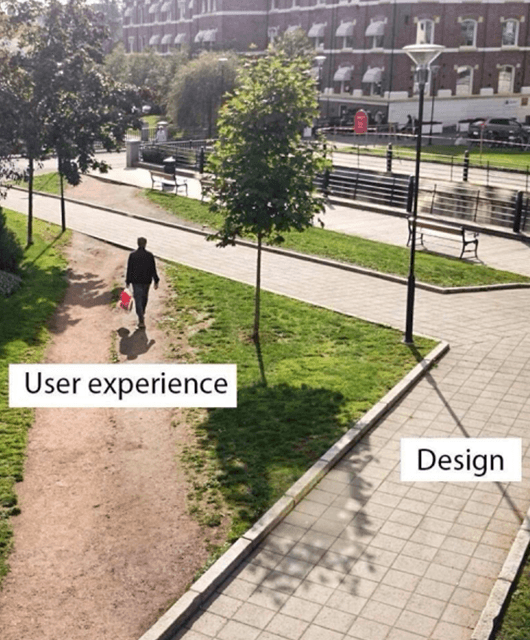
Desire Paths | Source: © Natalia Klishina/99% Invisible
One way urban designers can see how people are using public parks is by their ‘desire paths.’ These are pathways worn into the grass that show the alternative routes people are taking instead of the prescribed, designated paths. Sometimes those in charge see these paths as disrupting the original design of the park — so they re-sod them, fence them off, or add dense vegetation or signage. Other, more enlightened designers, use these as key data points in identifying what routes to embrace next. Some park designers deliberately leave land partially or even fully unplanned to see what desire paths are created and then incorporate those into the next iteration of the design.
Democracy is an Everyday Action
November 8: Election day.
Only 4 days after the Cubs World Series Parade and Rally, I was in a Chicago bar along with hundreds of young people, all in a daze. Televisions were blaring with news anchors, reporters, and pundits, who themselves were having trouble understanding what had just transpired. I walked onto the sidewalk, called a Lyft, and rode home in silence. How things had changed.
The importance of our everyday interactions in public space has come into sharp focus. How we treat each other, the demands we make of our government, and the effort we put into our environment matter. The next time you take a walk, ride your bike, ride the bus or train, or are stopped at a traffic light, notice the parks, plazas, and public spaces near you. How are they designed? Do they encourage you to linger?
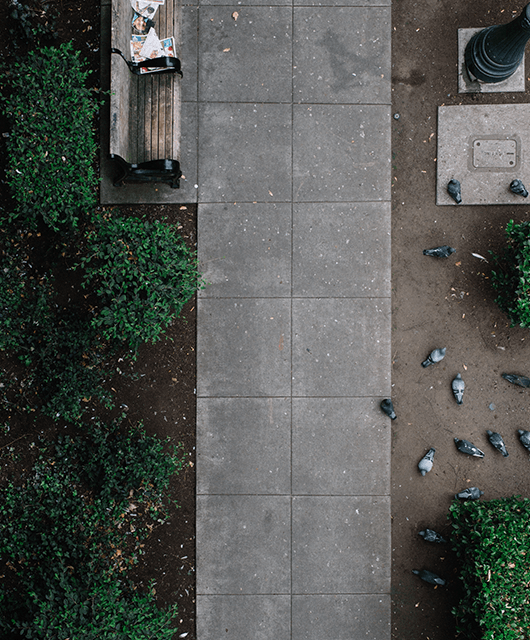
Next time you have a moment, interact with these spaces and see how others interact with them. What activities do you envision taking place here?
Next time you have five minutes, introduce yourself to another “stranger” in this public place. Why are they there? What do they think of the space?
Next time you have a little bit longer, grab a few of your friends, or maybe that stranger you met at the park last week. Dance. Sing. Demand equality. Give free hugs.
Let it spill out onto the street.

